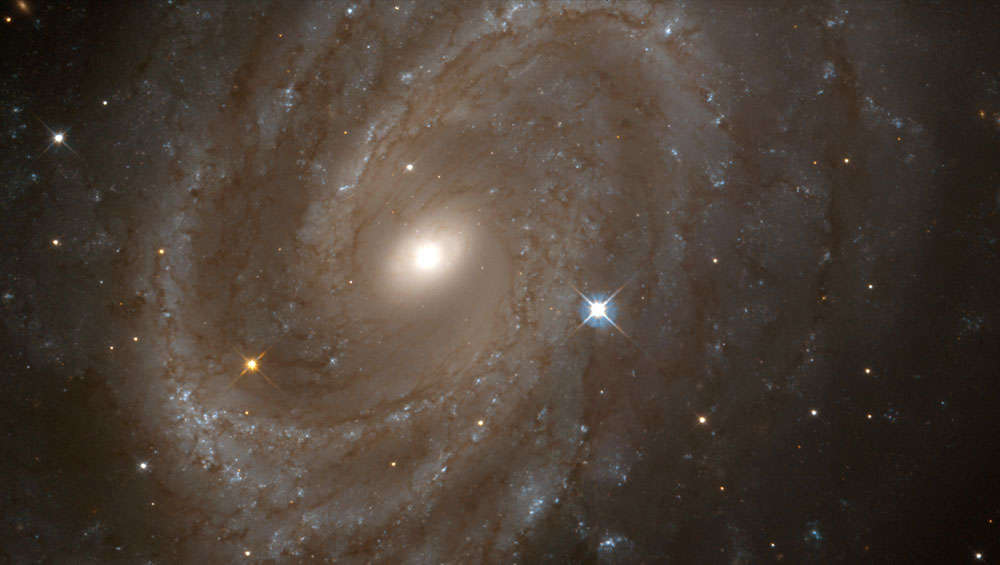Create a free profile to get unlimited access to exclusive videos, sweepstakes, and more!
Can a supercomputer take us back in time to when the universe was born?

In the absence of a TARDIS or Doc Brown’s DeLorean, how can you go back in time to see what supposedly happened when the universe exploded into being?
Try a supercomputer. Of course, ATERUI II isn’t just any supercomputer — it is the most powerful one on Earth capable of creating astronomical simulations. It’s pretty much the next best thing to a time machine, which is why scientists used it to create 4,000 virtual universes to get to the bottom of what really happened right after the Big Bang. Mysterious fluctuations in energy arose in the nascent universe. These fluctuations are thought to have formed galaxies as the universe expanded at breakneck speed.
While no one really knows why inflation happened so fast, simulations that evolved all those galaxies are now offering a look far back in time.
"By applying this analysis method, it is expected that inflation theory can be verified efficiently,” said astrophysicist Masato Shirasaki of the National Astronomical Observatory of Japan (NAOJ), who recently led a study recently published in Physical Review D. “It is, so to speak, a time-saving technique that can scientifically verify the beginning of the universe.”
After the Big Bang, the universe blew up into something gargantuan right after it came onto the scene. Even astronomers have a hard time fathoming the speed at which this happened. If someone had been there with a camera about 13.8 billion years ago, our technology still might have been no match for a phenomenon in which the size of the universe expanded to over a trillion, trillion times its size in less than a trillionth of a trillionth of a microsecond. That takes a moment for the human brain to process.
The problem that Shirasaki and his team saw was that while inflation should have caused fluctuations in density that would have helped newly spawned galaxies grow, there was something getting in the way.
To get an idea of what ATERUI II can do, check out this simulation of binary star formation below:
Galactic growth is not just affected by inflation. Supermassive black holes are thought to be in symbiotic relationships with their galaxies, evolving with them and influencing the amount of star formation that goes on. Previous research had found that the stars and supermassive black hole of a galaxy grow together, despite black holes having a reputation for devouring star stuff. They do, but the amount of dust and gas that accretes around them and eventually falls into that gaping maw is not that much compared to all the star-forming gas in a typical galaxy. Occasional interactions between galaxies can sometimes shake that up.
There were other gravitational forces that were not allowing Shirasaki to see how primordial density fluctuations were brought on by inflation. This is where ATERUI II came in.
Named after an ancient chief, ATERUI II can get through up to 3 quadrillion operations per second. Its 40,000 processing cores (6,666 times more than the newest MacBook Pro) and 365 terabytes of memory (the number of times it beats the MacBook’s lowly 32 gigabytes by has way too many zeroes). Because it is capable of so many processes, this supercomputer is an unreal multitasker that can split problems into parts that get handed out to the different cores, which should be no problem when there are thousands and thousands of them.
Virtually going back in time, the scientists first set up a distribution of galaxies that was based on fluctuations in density, then another that included both the effects of gravitational interactions that were obscuring things and the density fluctuations that they wanted to observe. Rewinding eons and eons on this galaxy distribution with ATERUI II showed fewer effects on galactic growth from gravitational interactions. It easily went through 100 million cosmic objects in the 4,000 galaxies whose evolution it simulated.
Using this reconstruction method is now allowing both Shiragaki’s team and other scientists to see post-Big Bang inflation more clearly. It can also shorten observing time in galaxy survey missions. Just a tenth of the data normally needed to verify inflation theories is needed.
If a TARDIS ever landed on this planet, you now know what astronomers and astrophysicists would use it for.


























